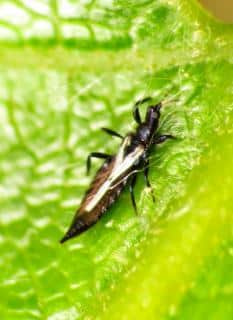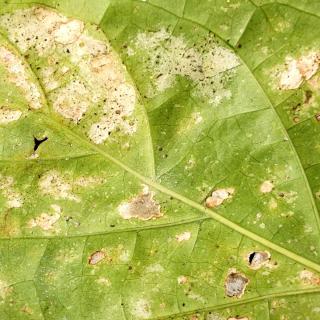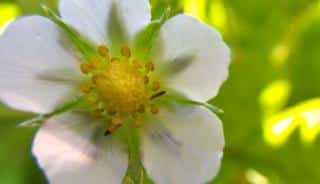

Thrips are tiny insects – nearly microscopic – that either destroy or protect plants.
Key thrips facts
Name – Thrips, Frankliniella, Caliothrips among others
Order – Thysanoptera
Lifespan – 60 days
Size – 1/64th to 1/8th inch (0.2-3 mm)
Danger to plant – rarely deadly, except if spreading virus
Side effects – transmit viral diseases
Beneficial – yes and no, depending on species
Appears in: spring to fall (year-round indoors) – Contagious: very (air-borne)
<!– silent
Main treatment
–>
They can be found both in the garden and in the house. Nearly 6,500 different species of thrips exist. The great majority of them are beneficial insects in the garden. Some, however, are truly pests.
Read also:
Thrips are tiny animals that are part of the insect world. There are thrips of all kinds: some feed on plants, others chew up decaying matter. Still others are predators that hunt for food, chasing other insects and tiny bugs.
 They’re extremely small and it’s very hard to see them without a magnifying glass or microscope.
They’re extremely small and it’s very hard to see them without a magnifying glass or microscope.A common name for thrips is thunderfly. This is because they drop to the ground in large numbers shortly before thunderstorms! The build-up in static electricity interferes with their flying and they simply drop from the sky.
Some thrips pose grave dangers to crops, harvests, and greenhouse growers.
The word “thrips” is always used with an “s” at the end, even when talking of a single individual.
Thrips species that feed on plants usually damage plants in similar ways. However, each species of thrips is different from the next.
Additionally, most species of thrips feed on different species of plants. Damage due to thrips thus depends on the host plant on one hand and the thrips species on the other.
Main symptoms of thrips are:
 Flattened patches on leaves that are white or silver-colored at first and turn tan or brown later on.
Flattened patches on leaves that are white or silver-colored at first and turn tan or brown later on.Learn about thrips damage in more detail.
Like many insects, thrips are born from eggs and go through several stages. For thrips, depending on the species, between 4 and 6 stages are needed for an egg to become a mature adult.
 Stages differ from one to the next. Wings, for example, may only appear in the last one or two stages.
Stages differ from one to the next. Wings, for example, may only appear in the last one or two stages.Thrips go from hatching to adult within 1 to 3 weeks. Many species of thrips, as adults, have a lifespan of up to two months.
<!– silent
–>
Biologically speaking, thrips are classified into two different branches (sub-orders) within the Thysanopthera order.
To tell them apart, look at the very last segment of the thrips:
Many pest thrips are from the Terebranthia order. Even before they’re born, the mother is already attacking plants to lay the eggs inside! The Tubulifera order also counts severe pests, too.
From a practical point of view, it helps to group these insects into different types of thrips according to how they feed.
Of course, predator and recycler thrips are beneficial thrips for the garden.
Carry a magnifying lens around when on the lookout for these. Sometimes, you’ll have to cut a flower bud open to discover them hiding and feeding inside!